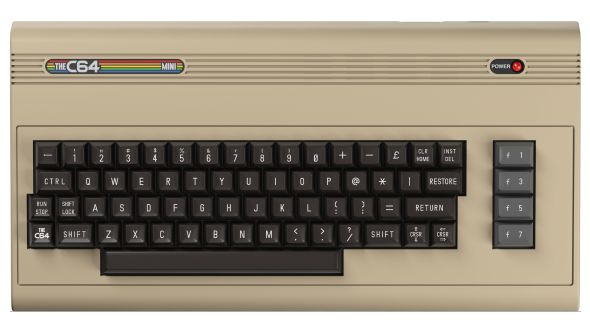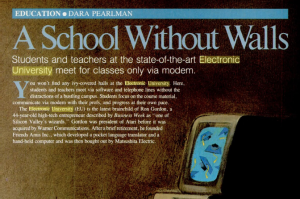
Articles
Editor’s Picks
What Happened to the Electronic University Network?
By Cait Etherington
January 09, 2018
Remember the Electronic University Network? If you don’t, you’re not alone but at one time the Electronic University Network was a leader in online education. In fact, long before MOOCs, mobile learning, and learning management systems, the project, started by former Atari president Ron Gordon, was a leading innovator in online education.
The Origins of the Electronic University Network

The Electronic University Network was developed by TeleLearning Systems, Inc. in 1983 by Ron Gordon. Gordon’s vision was clear: He wanted to create an online educational network that would be highly accessible. At the time, accessible meant having access to a Commodore 64, IBM PC/PCjr, or Apple II series computer, a modem, and an enrollment package from the Electronic University Network. Notably, in 1985, you could purchase a personal computer for about $149.95. For those without a modem, TeleLearning sold modems for $100. The tuition was also relatively affordable, ranging from $12 for a seminar up to $295 for credit-based university courses degree. The only other expense was “connect time” fees that ranged from 17 to 80 cents per minute.
As reported by Sharon Darling in a September 1985 issue of Compute, by 1985, the Electronic University Network had already gained a loyal following and attracted the attention of several large universities. “Close to 15,000 students are now taking classes and seminars in subjects ranging from economics to the subtleties of California wines. And the number of colleges and universities participating in The Electronic University has topped 1,700–all of which offer credit for courses taken through EU.” Among the institutions participating in Electronic University Network at the time were Cornell University, American University in Washington, D.C., Boston University, Virginia Tech, the New York Institute of Technology, Brigham Young University, the California State University system, and the State Universities of New York. While the Electronic University Network offered counselling services to help students make wise decisions about their course selection, partner institutions, rather than the network itself, issued degrees.

Not surprising, older students and non-traditional students played a key role in the network’s demographic. Tom Copley, a professor offering online courses via the network told Compute, “EU tends to attract older students than traditional universities. The usual emphasis on under graduate students who are 18 to 22 years old doesn’t always mesh with people in their 30s who work maybe ten hours a day and may have a family…Maybe it’s been a lifelong dream of theirs to finish college, or maybe their job depends on them finishing a degree. For them, the traditional college life doesn’t fit what they need. They’re tired after work, or they want the flexibility they can’t get from a regular university.”
Not surprisingly, this early online learning network was plagued by a few bugs. The author of a 1985 article in PC Magazine enrolled in three courses and reported that a few features of the system remained onerous. In one case, the author noted that it took four days for a message to reach their instructor. Another complaint was the inability to compose an essay using a word processing program and transfer it to the system’s built-in text editor.
The Electronic University Network’s Legacy
Like PLATO, the earliest online learning experiment, the Electronic University Network no longer exists per se but its legacy is undeniable. Gordon, who was already a seasoned tech entrepreneur when he came out of retirement to start the network, wasn’t just building an online university but also everything needed to make such a network successful. This included TeleLearning’s Electronic Library of 60 online databases, and interactive elements, including an electronic workbook. Like PLATO, which has recently received attention in a book-length study, its high time for Gordon’s pioneering network to receive sustained attention as a critical development in eLearning history.









[…] themselves whilst abiding by social distancing rules. People worked from home, learning was done online, exercise classes took place via Zoom, and people even socialized virtually. Although we are […]
[…] themselves whilst abiding by social distancing rules. People worked from home, learning was done online, exercise classes took place via Zoom, and people even socialized virtually. Although we are […]